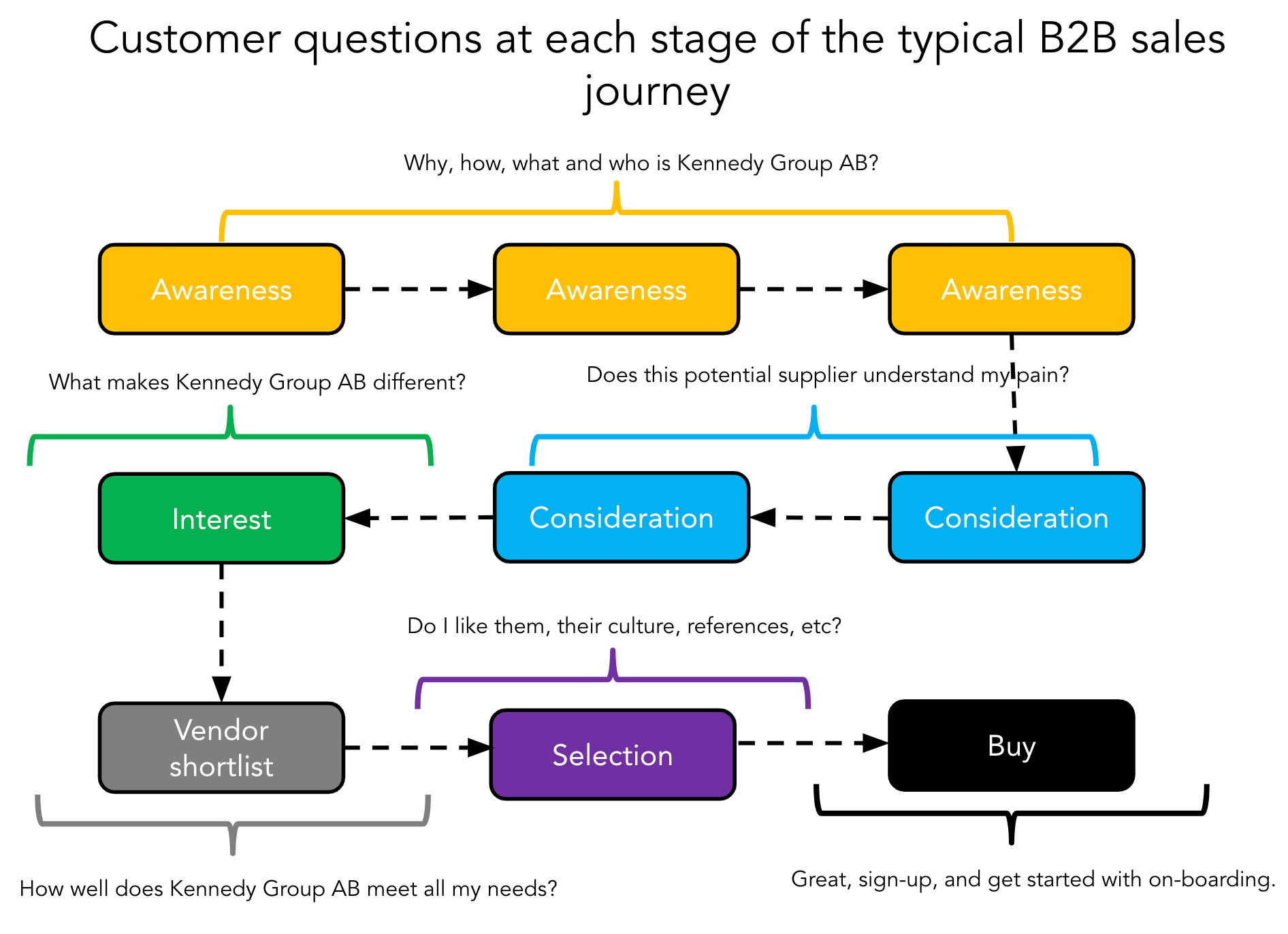WHAT IS A Buyer's persona?
A buyer persona is a semi-fictional representation of your ideal customer. It is based on undertaking market research and your existing customer insights.
When a buyer decides to buy, what might seem like a simple transaction can actually be an intricate set of many interactions. If a buyer has a range of alternatives or symptoms to decipher – it can take time and effort.
Target your solution to fit a particular customer problem
Marketing has always been about defining your ideal buyer and how you reach them. How you position your products or brand needs to fit the emotions and needs of the buyer. A good fit shows you understand the buyers pain better that the anybody else. And how you communicate that, guides your leads and prospects to your solution.
Probably only a small portion of any population will be interested in your solution. If you try to market to everyone, you waste both time and money. If you have a product but no demand it probably doesn’t solve a problem that people are looking to address.
Every day we form impressions of a brand. This can be from multiple touch points – ads, websites or conversations with family and friends, and our own experiences. These impressions shape to some extent the initial consideration that we put together as we start our buyer’s journey.
Without knowing who your ideal customers are, their backgrounds, goals and challenges – how can you market benefits to them? A buyer persona created with research and your own insights helps define you marketing messages for your ideal customer.
The buyer’s journey can be divided up into three different stages; Awareness, Consideration and Decision. Each stage dictates the type of content a buyer would typically consume.
To avoid the trap of building a sales process around your own needs, you must specifically address a buyer’s pain.
Buyers don’t want to be prospected, nurtured or closed. These types of steps in the buying lifecycle add zero value. Today, buyers source so much information online themselves. To move lifecycle stages you’ll need to know the contacts’ needs to add value and gain trust.
To develop an inbound sales perspective you need to define the buyer’s journey to adopt a “buyer-centric” approach.
The traditional sales funnel maps the journey a person takes from prospect along to a customer. Although it is typically called a sales funnel, marketing has always be at the heart of the funnel.
Understanding a customer’s behaviour can – and should – form the basis of your marketing strategy.
You’ll need to review and detail the journey your customers take to reach you. Identifying those points (customer touch points) that you can influence as they move along the sales funnel.
Where do you have contact with them? Is there a particular order to your buyer’s journey? Where could you influence them most?
What Is The Value Of A Sales Funnel?
The concept of the classic sales funnel dates back to a time when the customers path to purchase was far simpler. It is a journey triggered by marketing to attract leads into the top of the funnel. Sales then receive a “warm” prospect and focuses on a sales conversion as they progress down the funnel.
A sales funnel maps out what content is needed to for a particular buyer persona in their buying journey.
The funnel visualises the customer journey and its stages. For example, it doesn’t make sense to talk about product features at the top of the funnel (TOFU). At this stage visitors don’t know you so well or lack awareness of the problem they have.
Problems with the sales funnel
A sales funnel, the path to purchase, the buyers journey and customer journey mapping are to a great extent interchangeable. As they all refer to a series of channels that customers touch from prospect to purchase. The customer journey map refers to the emotional experience consumers have. It can also flag what gaps exist in the customer experience where a company falls short.
But typically all of these approaches cover a buyer who is:
- Contemplating making a purchase
- Researching and narrowing down a shortlist of options
- Buying the selected product
- After sales experience from onboarding to becoming a repeat customer to being a brand advocate
Today in the digital world buyers behave differently.
Moving around the funnel from one stage to another, entering and leaving at different points. This fluidity is contrary to the idea of a traditional funnel. With only two openings, at the top and bottom and ignores the leakage through the sides.
The traditional approach to a funnel shows marketing leading a consumer through the top and handing over to sales. In today’s market buyers are keen to do self-research.
Marketing needs to take more responsibility, providing educational content to nurture contacts towards the direct sales stage.
So, the influence that marketing has in the sales funnel is growing.
The Digital Buyers journey
Understanding more about your customers by creating a buyer persona reveals the format, style and communication preferences of your buyers.
Knowing which touch points have the potential to influence a particular lead can direct your sales and marketing efforts.
Use our FREE Buyer Persona template to help create the right message to communicate to the right audience.



